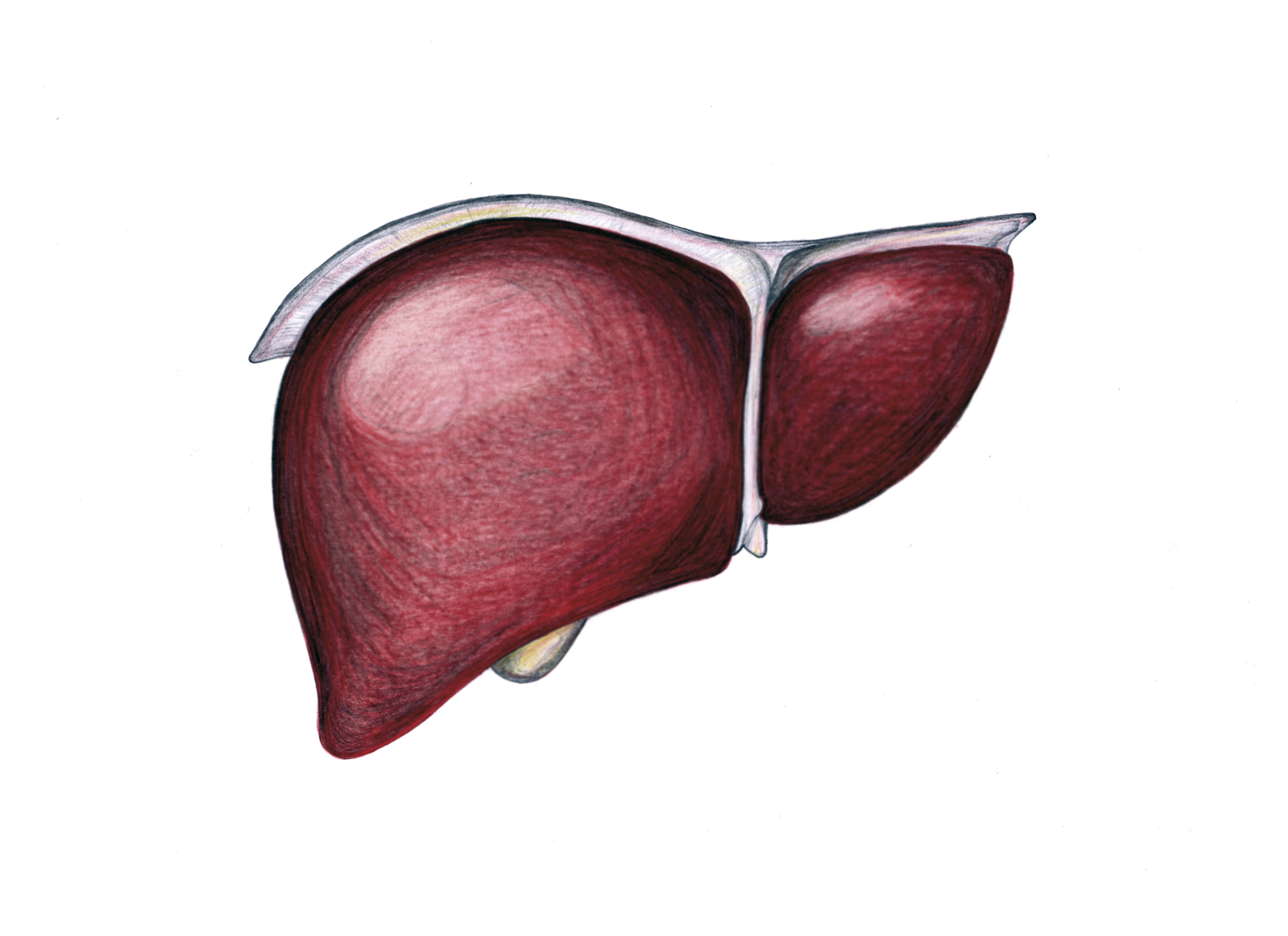A European consortium with the participation of the MHH is developing a new tool to determine the individual risk of liver fibrosis and liver cancer.

A new tool can determine the individual risk of liver fibrosis and liver cancer. Copyright: Deutsche Leberstiftung
Liver cirrhosis is one of the most common causes of death worldwide. In Germany alone, about one million people are affected by the disease. The cause is a chronic inflammatory process, often triggered by a fatty liver or by infections with hepatitis viruses. This causes connective tissue cells to accumulate. If the liver fibrosis progresses, the tissue becomes scarred, cirrhosis develops and the liver loses its function. In a European study, researchers have now developed an index that can be used to predict the risk of cirrhosis or other serious liver diseases. The study was conducted as part of the "LiverScreen" project, which is supported by the European Union with six million euros. The German subprojects are researching the introduction of the procedure into health care practice and are led by Professor Dr. Frank Lammert, Vice President of the Hannover Medical School (MHH) and one of the authors of the study, which has just been published in The Lancet, a leading medical journal worldwide.
Early risk assessment possible
Although cirrhosis of the liver caused by hepatitis viruses is on the decline - thanks to new treatment methods, which have been developed in the last decades in a leading role at the MHH. But at the same time, the incidence of fatty liver disease is increasing as a result of diabetes, obesity and alcohol consumption. "Cirrhosis develops insidiously and often remains undetected at first," warns Professor Lammert. At the time of diagnosis, it is therefore often in an advanced stage and treatment options are limited. There is a need for simple instruments based on clinical or laboratory parameters to identify patients at risk at an early stage, the physician emphasises. In future, this will be possible with the newly developed "LiverRisk Score". It is calculated from age, gender and six standard values such as blood sugar, cholesterol, platelet count and liver values, which can be easily determined in any laboratory. The risk of later complications can also be estimated with the index. "This allows us to predict whether a person will develop cirrhosis and eventually develop liver cancer and die from the disease," says Professor Dr Michael Manns, MHH President and co-author of the study. "By calculating the risk early, preventive measures such as exercise and a healthy diet can help to prevent the development of cirrhosis and hospitalisation," Professor Lammert explains further.
Similar to risk prediction for heart attack
To develop the LiverRisk Score, the researchers used data from 6,400 people who had no known liver disease. How many of them actually already had liver fibrosis was determined by a so-called liver elastography test, which can determine the stiffness of the liver. The risk index was then checked in more than 8,000 people, and the predictive value was finally calculated in a cohort in the UK with more than 416,000 participants without liver disease and a follow-up period of twelve years. "The significance of the LiverRisk Score is similar to that of cardiovascular risk factors, which have been used for many years to predict whether a person is at risk of heart attack," emphasises liver expert Professor Manns. In the long term, the risk index should help to reduce the number of cirrhosis cases.The average life expectancy of those affected is ten to 20 years lower than that of the population as a whole.
The LiverScreen Project
The LiverScreen project is led by the University Hospital of Barcelona. It builds on the SEAL study, which ran in German GP practices with funding from the Innovation Fund of the Joint Federal Committee and was published last year. The aim is to evaluate the potential of a non-invasive technique, liver elastography, for screening for chronic liver disease in the general population. The project involves 43 hospitals and research centres in Spain, Denmark, Germany, France, Italy, Croatia, the Netherlands and the United Kingdom. A multi-professional team with staff from all health care professions as well as experts from the fields of statistics, economics and quality management and patient support groups are working on this project. Professor Dr. Frank Lammert is coordinating the projects in the European consortium that are researching the introduction of the procedure in clinics and practices.